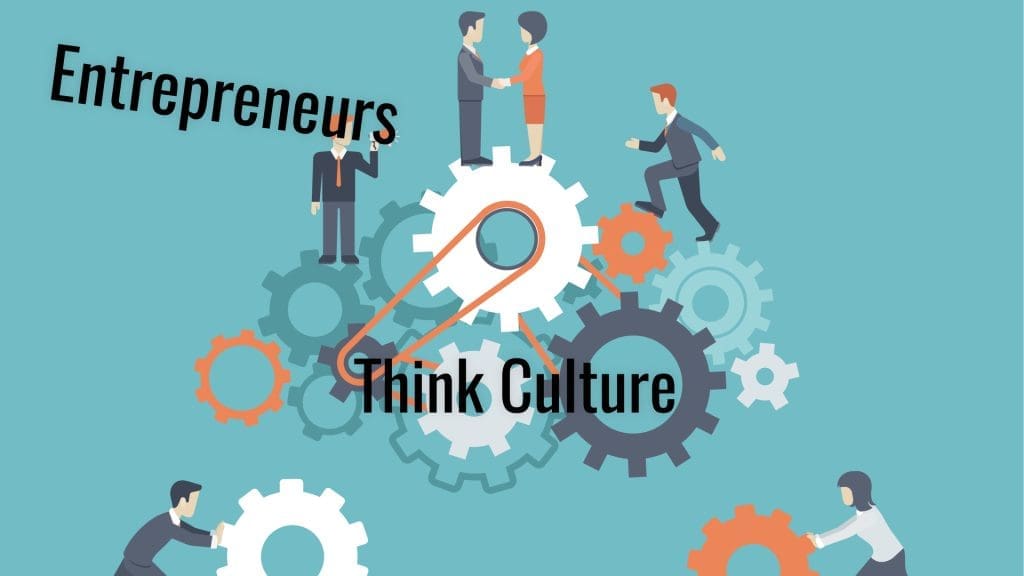At SAMC, one of our driving passions is helping entrepreneurs succeed. Not long ago, we were working with one such entrepreneur who had asked us to evaluate his business in the event marketing industry. While the company was highly creative and doing well, the problems seemed to stem from a recurring pattern of turnover (among the creative leaders, the controller, the new business developers) and workplace disenchantment. People came and went through a proverbial revolving door.
From our client’s perspective, the challenge was how to hire the right people to support the company’s rapid growth, but we could see that the culture he had created seemed to foster employee disarray. Was the problem in the business segment itself, as the CEO thought? Or was the problem the CEO himself (as we wondered)? Or, perhaps, was it the company’s culture? And if so, was this a good time for changing that culture?
Could a little anthropology help build a better corporate culture?
For this particular entrepreneur, culture was an elusive “thing” that he knew he should pay attention to. However, he wasn’t sure what his culture actually was, much less why it would lead to so many people coming and going.
As we began our work with him, we could tell that the problem was a little of everything, which is what an organization’s culture is all about.
Could this business leader address his challenges if he saw them with fresh eyes?
Culture is one of those things that is essential to human existence — humans evolved as our brains changed and our social life became essential in order for hunters and gathers to thrive. We created symbols, gave events meaning, crafted and told stories and found ways to share them. This was all part of how humans created bonds among different people and forged them into communities or tribes beyond their immediate family. (There is abundant research on this topic but Joseph Henrich explains it quite nicely.)
In business, we see the same phenomena taking place. Whenever people get together, you will find them searching for ways to connect. They instinctively move from isolated strangers to parts of a community, looking for those shared sets of values, beliefs and behaviors in the business environment — i.e., a culture.
For business organizations, culture is what happens behind the scenes. It is “the way we do things here” and exerts great power over employees as they try to find the most efficient ways to get through their workdays.
There is a great quote attributed to Peter Drucker on how corporate culture eats strategy for breakfast, yet George Anders does a great job of analyzing this concept even before Peter Drucker is attributed to saying it. The point is that for entrepreneurs growing new businesses (and for this client of ours trying to fix his own business), understanding a business culture and the impact it has on employee behavior is essential to building a successful organization. It really isn’t an HR function, or something on your “to-do” list to get to someday. If you want to get things done effectively and appropriately for the customer market you are tackling, you better start by tackling your culture.
If you are an entrepreneur, how do you go about establishing a business culture? Try our 6-Step Process
For any business leader, and particularly for entrepreneurs, there are essentially two choices when it comes to a company’s culture: 1) Pay little heed to how your business culture is going to develop and let the staff figure it out themselves (and they will) or, 2) Consciously decide how your business should operate and then design, develop and construct a culture that works for the staff and the business so that both can flourish.
A valuable cultural assessment tool to use: the OCAI
To learn more about the importance of organizational cultures, check out the highly regarded and well-validated research by Kim S. Cameron and Robert E. Quinn, “Diagnosing and Changing Organizational Culture.” While their methodology (www.ocai-online.com) focuses on evaluating an existing corporate culture, we at SAMC use it to help entrepreneurs become more intentional about designing and building their company’s culture.
To see how this methodology could help your business, I invite you to take the Organizational Culture Analysis Instrument (OCAI) here. But before you do, ask yourself the following questions, and write out the answers.
- Dominant Characteristics. What do you want the dominant characteristics of your organization to be? Describe them and then write a story about them. It will help you visualize this company you are building or plan on creating in the future.
- Style of Leadership. What type of leader do you think you are? How should leadership be developed in your organization? Are you going to be a controlling autocrat directing activities? Or do you see you and your team as visionaries who create new ideas? Perhaps you want everyone to be team-focused with a lot of consensus building. Or maybe you are similar to a commodity trader I once met whose company was highly competitive and everyone was making a lot of money — but with little or no team-building.
- Treatment of Employees. How do you want your employees to be treated? Like “family” or like hunters seeking results and rewards? This is very important.
- What Is the Glue That Holds the Company Together? This is a big question. Give a good deal of thought to your answer here. Are people coming together to build something, together? Or to win a battle? Are they focused on being the next best idea? Or is it a family-type of firm with a focus on collaboration and team-work?
- Strategic Focus. Strategic perspective comes next. What type of strategy is going to be the core of your business, surrounding its cultural beliefs and values?
- How Will You Define Success? Finally, what is the success criteria that drive you and that help you and your employees celebrate when you reach those critical points in the business’s growth? Think about the rituals and symbols that define the recognition you want to share.
For our client, what the OCAI told him about his culture was a big wakeup call
Let’s return to our client’s story. Using the OCAI, we worked with him to assess his current culture and determine what the preferred one might be. Then we built that “future culture” story with his staff, whose vision was a culture that could convert people into employees who were deeply engaged. Along the way, what was revealed was a CEO who had been far too directing and controlling and an organization that built too little employee empowerment and trust.
Ironically, the CEO was actually a free-wheeling idea guy who just had a hard time mobilizing people to collaborate and innovate. Hence, staff came and went to find other organizations where they could be creative, respected and engaged.
To change this CEO and the culture he had created, however, was not easy, and that’s when the real work began. Yet, there is a proven process for that, which I will be sharing in forthcoming blogs. Stay tuned!
To read more, 2 blogs…
- Has Your Business Stalled? Maybe It Is Time For A Culture Change!
- Your Business is Doing Great! But Are You On the Brink?
If you think your culture could use a hand, we offer a free 1-hour consultative session. Reach out and let’s talk.
From Observation to Innovation,

Andi Simon, Ph.D.
Corporate Anthropologist | President
Simon Associates Management Consultants
Info@simonassociates.net
@simonandi



